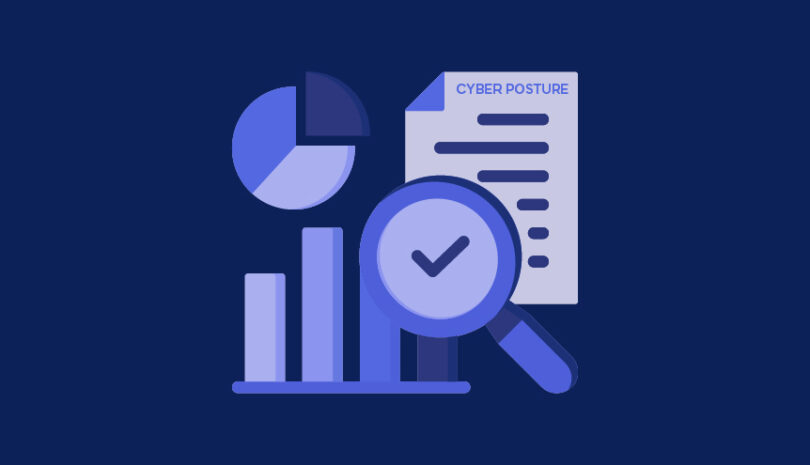Today’s global supply chains bring a lot of benefits for enterprises. Increased global competition lowers prices and raises quality, and working with third parties frees businesses to focus on core competencies.
But it also opens up new areas of risk. When you depend on third parties for key services or components, you become vulnerable to supply chain disruptions. If one vendor fails or has availability issues, or a transportation route gets clogged, it could seriously affect your business operations.
What’s more, disruptions become more frequent as supply chains extend further. You don’t just need to worry about vendor failure, but about the failure of one of their vendors, or their vendors’ vendors. Rising concentration risk means that many vendors might rely on the same supplier or service provider. If that fourth party fails, it could collapse your supply chain in one fell swoop.
This makes it vital to bake resilience into your business risk management. Proactively setting up systems for early warnings about possible supply chain disruptions, and preparing contingency plans for vendor failure, equips you to maintain business continuity and minimize operational impacts. It also enables you to identify vulnerabilities, optimize business processes, and respond faster to changing circumstances, resulting in improved customer satisfaction, fatter profit margins, and enhanced competitive advantage.
Identifying and Assessing Supply Chain Risks
At a time when supply chains extend all around the globe, and are still fractured and fragile after the crisis of COVID-19, managing supply chain disruptions should be high on the to-do list for every business.
The first step is to identify and assess all the risks lurking in your supply chain, by:
- Mapping every link in your supply chain
- Evaluating each vendor’s risk of failure or interruption
- Scoring and prioritizing those risks
This gives you the information you need to make contingency plans, shore up resilience, and decide how to resolve or mitigate the potential fallout of a supply chain incident.
Mapping the Supply Chain
You can’t manage supply chain risks if you don’t know who is in your supply chain. You need to build a comprehensive map of all your suppliers, service providers, and contractors. Extend it to include fourth-parties and ideally fifth-parties too, so that you can see all the connections throughout your supply chain.
As you create your supply chain map, make sure to cover vital information about vendor risk exposure. That means noting their geographical locations, and how critical their services are for your business operations.
Risk Assessment and Prioritization
Once you’ve generated a clear supply chain map, you’re ready to begin evaluating the risks that hide within it. For each of your vendors, consider their vulnerability to different types of risk.
Find out whether they are at risk from geopolitical upheavals like riots or revolutions, or if they operate in an area affected by natural disasters such as earthquakes, hurricanes, or volcanoes that could disrupt their operations. Check if they have robust cybersecurity that can protect them from cyber attacks, and investigate their financial stability to see if they can withstand inflation or an economic downturn.
Risk Scoring and Categorization
Now you’ve got the information you need, convert it into a clear risk profile. Set up a scoring system that analyzes risk data and delivers a single overall risk score, based on the likelihood of a risk actualizing and its potential impact on your business operations.
Trustworthy risk scoring enables you to compare vendor risk levels and make data-driven decisions about who to work with, how much to rely on them, and what contingency plans to make in case of supply chain disruptions. Risk scores also allow you to prioritize the highest-risk vendors for mitigation efforts, helping you close vulnerabilities and boost resilience.
Implementing Technology for Supply Chain Resilience
Raising your resilience to supply chain disruptions is crucial for maintaining business operations, enhancing trust among customers and partners, and complying with a number of regulations and standards. But it’s also challenging.
Implementing the right tech tools can make a big difference to your success in managing supply chain risk, enabling you to identify, assess, and address supply chain disruptions more efficiently. Your toolbox should include:
- Supply chain monitoring systems
- Predictive analytics and AI
- Automated alerts and notifications
Let’s take a closer look at each of these supply chain risk solutions.
Supply Chain Monitoring Systems
First up are supply chain monitoring systems, or SCMS. These are powerful solutions that use technologies like machine learning (ML) and IoT to monitor changes to your supply chain in real time. They support a proactive approach to supply chain risk management, helping to reduce downtime and enhance availability.
An SCMS tracks variables like inventory levels, shipment progress, and supplier performance, and consolidates data into a centralized platform. The real-time visibility that you gain from SCMS solutions allows you to spot bottlenecks, predict delays, and mitigate disruptions before they affect operations.
Predictive Analytics and AI
Tools that incorporate predictive analytics and AI technologies improve your ability to forecast potential disruptions such as demand fluctuations, supplier delays, or geopolitical issues. They furnish you with the ability to foresee and mitigate risks, so your business can continuously adapt to changing circumstances
These solutions can crunch vast amounts of historical and real-time data to detect patterns and anomalies that indicate supply chain risks. Their insights give you valuable lead time to take preventive measures like rerouting shipments, adjusting production schedules, or sourcing alternative suppliers.
Automated Alerts and Notifications
Combining your SCMS solutions, predictive analytics, and AI tools with automated alerts can create a seamless system that is stronger than the sum of its parts. Data and insights can be leveraged to automatically trigger notifications for relevant stakeholders.
Immediate alerts reduce the time between detecting a disruption and responding to it, and ensure faster, more coordinated actions across the supply chain. This way, decision-makers can quickly assess the situation and activate contingency plans, thereby minimizing the impact of supply chain risks.
Best Practices for Vendor Management and Resilience
As you already know from other areas of your business, tech tools only have limited impact unless you combine them with robust processes and policies. Adopting best practices for your relationship with vendors can play an important role in strengthening resilience to supply chain disruptions.
These best practices should include:
- Vigorous vendor due diligence and regular audits
- Strong contracts and SLAs that set clear expectations for vendors
- Ongoing communication and collaboration with all your partners
Vendor Due Diligence and Audits
Carrying out rigorous due diligence before you onboard a new vendor should be a no-brainer. You need to know each entity’s cybersecurity posture, financial stability, compliance history, and business continuity from the get-go. This way, you can take steps to minimize the chances of supply chain disruptions, and/or decide whether they expose you to an unacceptable level of supply chain risk.
It’s equally crucial to continue these assessments throughout the vendor lifecycle. You want to regularly evaluate third parties for any changes in their risk posture, so that you can act quickly to mitigate the elevated threat.
Strengthening Contracts and SLAs
The contracts and SLAs that you sign with vendors form your armor against supply chain disruptions. Make sure that vendor agreements clearly state your expectations around availability, risk management, and incident response, so that vendors know what you require from them.
Third-party contracts and SLAs should include specific clauses about cybersecurity levels, continuity support, and response protocols, including reporting timelines for incidents like data breaches, interruptions to their availability, and changes to their financial or business stability.
Ongoing Communication and Collaboration
Smooth communication with your vendors is possibly the best protection against supply chain disruption. When vendors can easily get in touch with you without any friction or obstacles, they’ll be more likely to keep you updated about changes to their operational status or emerging challenges that could affect your business.
Ensure seamless collaboration by maintaining good communication channels and checking in with vendors regularly. These could be quarterly phone calls, shared project management platforms, or zoom meetings at scheduled intervals. What matters is that you make it simple for vendors to inform you about their business circumstances.
Testing and Continuously Improving the Continuity Plan
It’s almost inevitable that supply chain disruptions will affect your business at some point. That’s why every business should have contingency plans. You need a comprehensive set of protocols that addresses all the most common eventualities for your organization, whether that’s port closures, network crashes, or mass data breaches.
However, continuity plans aren’t a one-and-done affair. You need to keep checking them with simulations, updating them with the results of your test scenarios, and training your employees so that they are familiar with your current plans. Here’s a closer look at what goes into maintaining robust continuity plans.
Running Simulations and Drills
It’s one thing to come up with a theoretical plan for business continuity. It’s another to be sure that it will hold up in the face of actual supply chain disruptions. That’s why you need to conduct regular practice drills that test the effectiveness of your supply chain continuity plan.
These simulations give you insight into how well your systems, processes, and teams respond under stress. They help you to identify weaknesses in your plans, test the reliability of backup solutions, and improve crisis management. Include your vendors in your exercises, to strengthen collaboration and ensure alignment with your supply chain risk management.
Evaluating and Updating Strategies
Once you’ve run your simulations, or if you’ve experienced a real supply chain disruption, you need to implement the lessons you’ve learned from the process. Carry out a thorough post-event review to analyze what worked effectively and where gaps emerged, flagging areas like response times, decision-making processes, resource allocation, and communication flow.
Updating your continuity plans helps ensure that they remain relevant to evolving risks and enables you to close any gaps that you spotted. This way, you and your customers and partners will have more confidence in your ability to withstand serious supply chain disruptions.
Training and Awareness Programs
Finally, you need to be sure that everyone involved knows what to do in the event of a supply chain disruption. When everyone is familiar with their responsibilities, you’ll minimize confusion and speed up response times. Run training sessions and workshops, send regular updates and reminders, and carry out simulations to keep everyone on their toes.
This includes your key vendors and suppliers as well as internal teams and employees. You want your critical partners to be prepared for incidents that could harm their availability, and to be familiar with reporting timelines and requirements.
Solutions for Supply Chain Disruptions and Vendor Failures
With organizations relying on an extended and often over-stressed supply chain of critical vendors, supply chain disruptions are a serious risk for any business. Building resilience into your enterprise is crucial for maintaining business continuity, enhancing customer trust, and expanding your competitive advantage.
Proactive planning, adopting effective technologies, and collaborating closely with vendors are all vital steps in protecting your business from supply chain disruptions. When you’ve prepared for supply chain storms, you’ll be equipped to optimize processes, take confident decisions, and boost your reputation.
Ready to prepare for supply chain disruptions and enhance your organizational resilience? Contact Panorays to learn more.
Supply Chain Disruption FAQs
-
The industries that are most vulnerable to supply chain disruptions are those with complex global supply networks or dependencies on raw materials or components that have volatile availability. These include manufacturing, especially in sectors like automotive and electronics; the food and beverage industry; healthcare and pharmaceuticals; retail and e-commerce; and construction and energy.
-
Organizations can prepare for supply chain disruptions by carefully evaluating their exposure to supply chain risks, assessing the impact that supply chain disruptions could have on business continuity, and creating business continuity plans (BCP) that ensure that they can continue critical operations even if some parts of the supply chain are delayed or unavailable.
-
There are a number of ways that tech can help prevent and mitigate supply chain disruptions. Supply chain monitoring systems (SCMS) deliver real-time visibility into changes in your supply chain. Predictive analytics and AI analyze data to give you insights into emerging risks so that you can take steps to mitigate it. And automated alerts ensure that relevant stakeholders are notified as soon as possible, speeding up response times.



